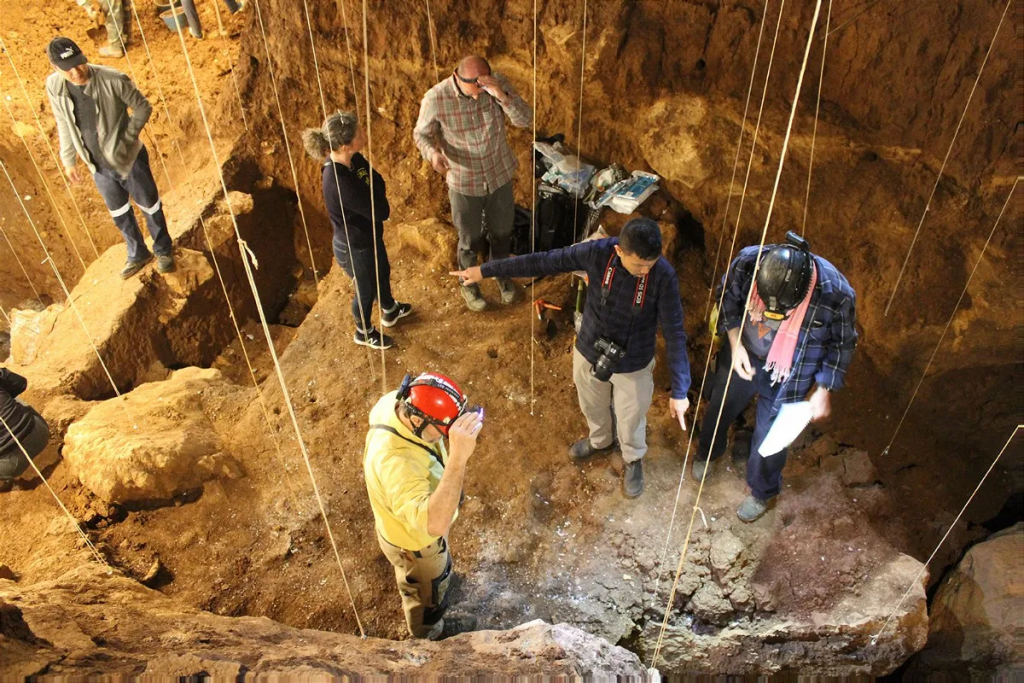
People started in Africa, yet when precisely our earliest precursors left the mainland and how they spread all over the planet has been strongly bantered by archeologists.
Two fossils uncovered in a cavern in northern Laos propose that Homo sapiens, our own species, was living in the locale exactly a long time back, as per another review. The finding difficulties the overarching thought that people’s way across the globe was direct and occurred in a solitary wave around 50,000 to quite a while back.
“Odds are this early movement was fruitless, yet this doesn’t divert from the way that H. sapiens had shown up around here at this point which is a striking accomplishment,” said concentrate on creator Kira Westaway, an academic partner at Macquarie College in Australia, through email.
DNA investigation of present-day human populaces has upheld the speculation that early current people left Africa around 50,000 to a long time back, and archeologists have thought our initial precursors probably followed shores and islands through southeast Asia toward Australia.
In any case, a becoming number of older human remaining parts found in China and the Levant show that this section in the human story is surprisingly convoluted.
The relocation 50,000 to a long time back “that adds to our ongoing genetic stock might not have been the first,” Westaway said. “There might well have been before relocations that were not effective and along these lines didn’t contribute their hereditary qualities to our advanced populaces.”
The two Laos fossils — a piece of a leg bone and part of the front of a skull — were found in Hat Dad Ling cave. The archeological site was found in 2009 when another halfway skull was uncovered.
Notwithstanding the most recent finds, two jawbones, a rib and a phalanx have likewise been found at the site, and the actual highlights of the remaining parts generally proposed they had a place with early present day people.
Dating fossils from the site demonstrated precarious. They were excessively old for radiocarbon dating, which can date stays from as long as quite a while back. Likewise, the human fossils found at the site are safeguarded by Laotian legacy regulations that forestall any sort of damaging investigation.
All things being equal, the group associated with the review, which distributed Tuesday in the diary Nature Correspondences, utilized two distinct methods to assess the fossils’ age.
The specialists estimated the glow in quartz and feldspar minerals in the silt layer, a strategy that uncovers how long it’s been since a material with translucent minerals was warmed or presented to daylight.
As the removal continued further, they likewise tracked down two creature teeth in similar layer as the human remaining parts and dated them by estimating the radioactive rot of uranium isotopes — compound components found in the tooth lacquer — in a strategy called electron-turn reverberation dating.
The two fossils were assessed to be 68,000 to 86,000 years of age, with the leg bone part being the more established find.
As well as tossing the course of events of early human relocation into question, the site likewise difficulties traditional reasoning that people’s earliest excursions in the district would have involved evading shorelines and island areas like Sumatra, Philippines and Borneo.
The upland district in the core of central area southeast Asia was and is vigorously forested, at a height of around 1,100 meters (3,609 feet) and a distance of no less than 300 kilometers (186 miles) from the ocean.
“The intriguing piece of this exploration is the area of the cavern. We know that hominins would in general move along waterway valleys inland, yet this area validates our premonitions that early Homo sapiens had the ability to adjust and scatter through upland forested districts significantly sooner than expected,” Westaway made sense of.
Archeologists accept there was a human presence around the cavern for very nearly 50,000 years, and the most recent disclosures highlight the district’s intriguing potential for paleoanthropology.
At a close by site, known as Cobra Cavern, a tooth accepted to have a place with a Denisovan, a subtle early human, has been found. In any case, that tooth is 70,000 years more established than the earliest Cap Dad Ling remains, so there’s no proof the two types of human blended or coincided at the site, Westaway said. 신규사이트
The world’s most established allegorical stone workmanship has been tracked down in collapses Indonesia, and terminated human species, including the little Homo floresiensis and Homo luzonensis, have been tracked down on islands in Indonesia and the Philippines.
The group hopes to uncover additional human fossils from the district. 안전놀이터
“This district is a great spot to pose a portion of these inquiries about relocation since central area southeast Asia truly sits at the junction of East Asia and island SE Asia/Australia,” said the review’s senior creator Fabrice Demeter, an associate teacher at the Lundbeck Establishment GeoGenetics Center in Copenhagen. 온라인슬롯
“Locales like Hat Pà Ling where there is a ceaseless, undisturbed stratigraphy (layers of residue) that holds various fossils over an extensive stretch of time will show us a ton about past relocations and how early current people and other hominins changed over the long run.”
온라인카지노 안전놀이터 신규사이트 메이저사이트 메이저놀이터 바카라 바카라하는법 바카라규칙 슬롯 슬롯머신 슬롯하는법 잭팟 룰렛 온라인슬롯 안전공원
